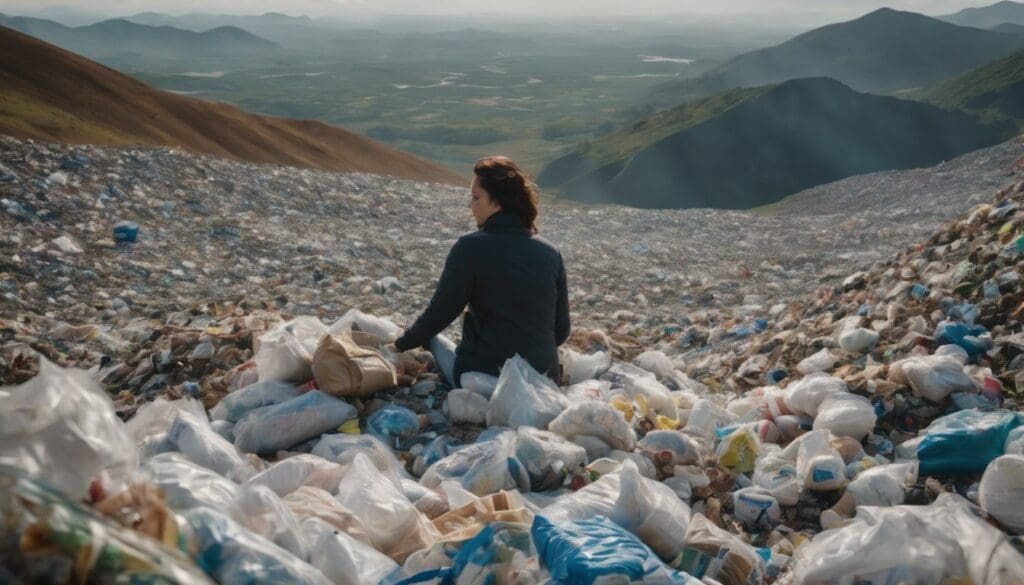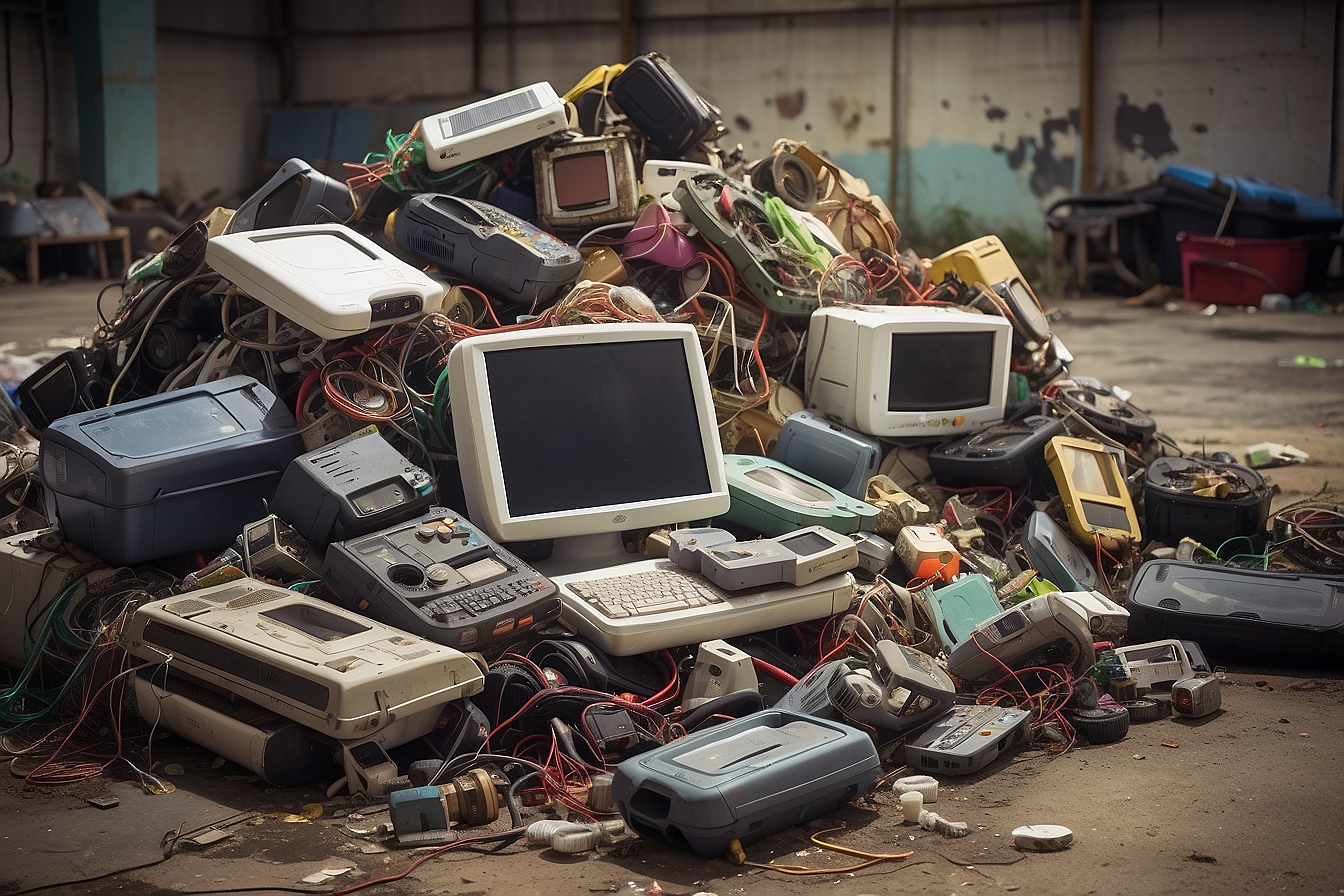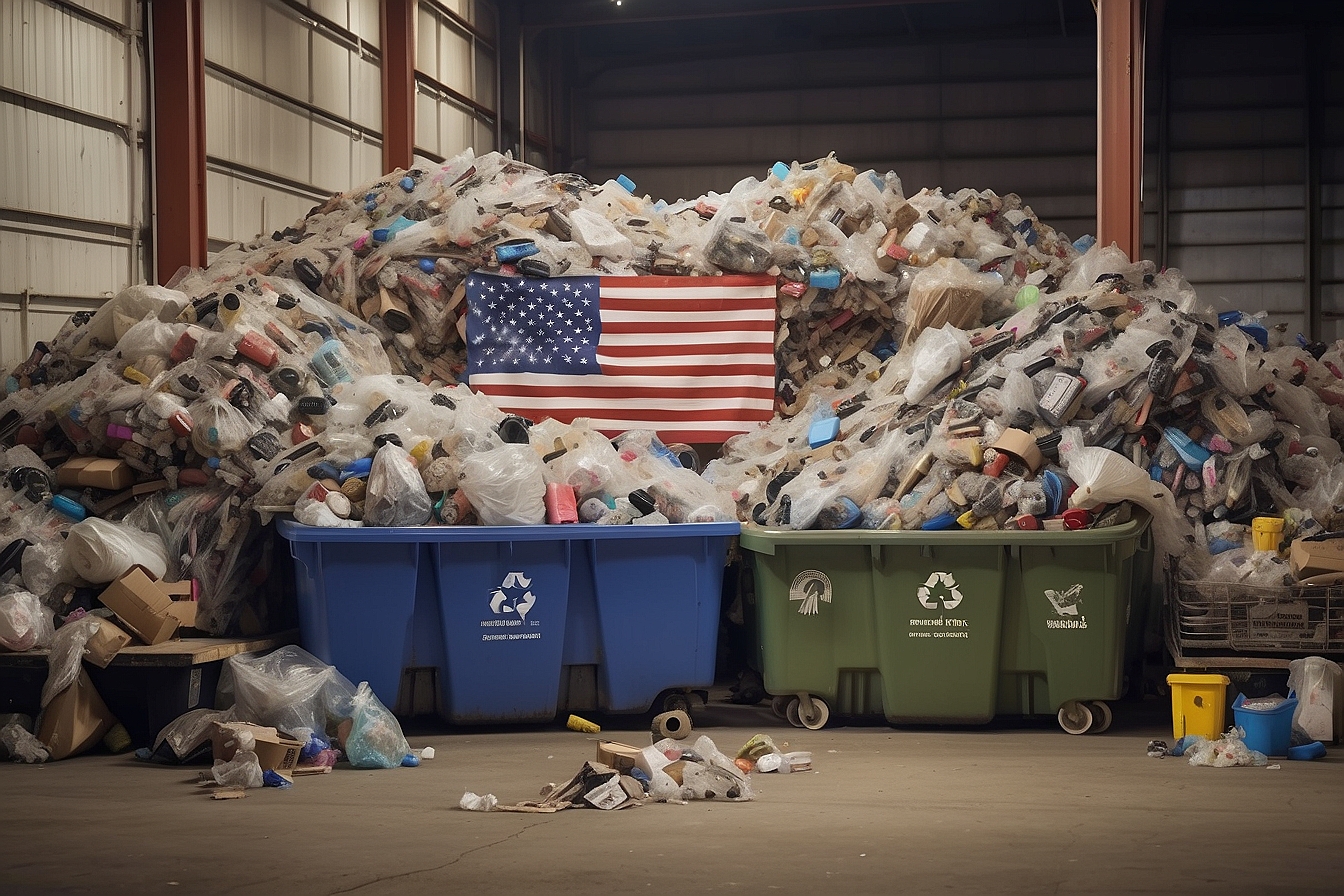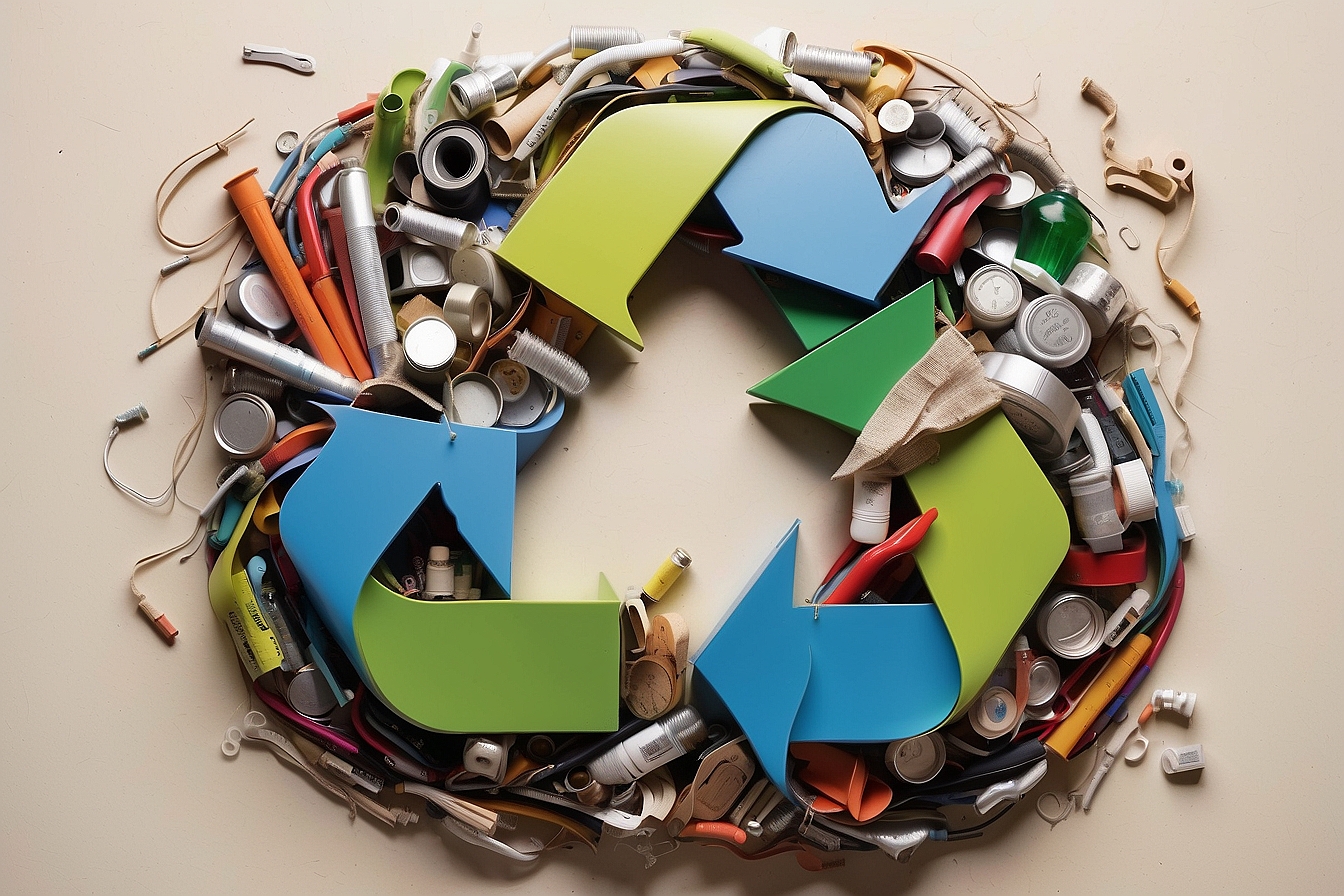As new parents, we’re well acquainted with the ceaseless tide of nappies each little one seems to churn through. Trust us, we comprehend the conundrum all too well – wrestling with the troubling truth that disposable nappies rank among the top offenders in landfill contribution globally.
That’s precisely why our article is poised to guide you through eco-conscious alternatives and provide a deeper insight into how making the switch from single-use options can significantly lighten your environmental impact.
Continue reading for solutions that will not only soothe your conscience but also offer respite to our dear planet.
Key Takeaways
- Disposable diapers are a major contributor to landfill waste, taking hundreds of years to break down and releasing harmful greenhouse gases during their decomposition.
- The production and use of disposable nappies involve toxic chemicals that can cause skin irritations for babies and contaminate groundwater, damaging the environment.
- Cloth nappies and biodegradable options offer eco-friendly alternatives to traditional disposables, reducing the carbon footprint and dependence on non-renewable resources.
- Composting programs provide a sustainable solution by converting soiled biodegradable diapers into nutrient-rich soil, thus minimising environmental impact.
- Advocating for government regulations, promoting education around diaper waste issues, and supporting innovative solutions can lead to more sustainable practices in managing diaper usage.
The Environmental Impact of Disposable Nappies
Disposable nappies have a significant environmental impact, from the transportation emissions involved in their production to the use of non-recyclable plastic and harmful chemicals.
They contribute to air pollution, soil contamination, and fill up landfills, taking hundreds of years to decompose and releasing greenhouse gases.
Transportation emissions
We can’t ignore the emissions from transporting disposable diapers. Trucks carry millions of these nappies from factories to stores, then to homes across countries and continents. This constant movement adds a hefty amount of greenhouse gases into our atmosphere, contributing significantly to air pollution.
By understanding this problem, we commit ourselves to finding better ways that reduce our carbon footprint. Opting for local products or those with minimal transportation needs are steps in tackling the issue head-on.
It’s not just about waste management; it’s also how we move goods that impact environmental health.
Use of non-recyclable plastic
Disposable nappies contribute to the environmental problem through the use of non-recyclable plastic. The plastic in disposable nappies takes hundreds of years to decompose, adding to the already overflowing landfills.
Additionally, it releases greenhouse gases during its long decomposition process, contributing to air pollution and global warming. The excessive use of non-recyclable plastic in nappy production also contributes significantly to the depletion of the ozone layer and adds harmful chemicals into the environment.
The unavoidable consequence is that the use of non-recyclable plastic in disposable nappies further exacerbates environmental issues, detrimentally affecting future generations’ wellbeing and well-being by creating a hazard for their health and natural resources.
Petroleum-based materials
Manufacturers of disposable diapers use petroleum-based materials in their production. These synthetic materials, such as polyethylene and polypropylene, contribute to the environmental impact of nappies.
The extraction and processing of these petroleum-derived substances release greenhouse gases into the atmosphere, adding to air pollution.
Additionally, the heavy reliance on non-renewable resources like oil for diaper production poses a threat to environmental sustainability. The continuous use of these materials not only depletes natural resources but also perpetuates our dependence on harmful industrial practices.
Harmful chemicals
Manufacturers use a variety of toxic compounds in disposable diapers, including dioxins and sodium polyacrylate. These chemicals can lead to diaper rash and other skin irritations for babies.
Moreover, when these diapers end up in landfills, the harmful substances have the potential to contaminate groundwater and release dangerous emissions into the air. Additionally, the production process for these diapers contributes to air pollution due to the use of petroleum-based materials and other synthetic chemicals.
Toxic compounds found in baby diapers can pose serious risks not just for infants but also for the environment as a whole. Whether it’s choosing biodegradable nappies or exploring reusable options like cloth nappies, making informed decisions about diaper choices can significantly reduce exposure to harmful chemicals while promoting a healthier planet for future generations.
Filling up landfills
Disposable diapers make a significant contribution to landfill pollution. They take hundreds of years to decompose and release greenhouse gases in the process, further exacerbating the issue of global warming.
The plastic components used in these diapers are non-recyclable, adding to the growing waste problem. As environmentally conscious individuals, it’s crucial to consider the long-term impact of our choices on future generations and seek alternatives that can help alleviate this environmental burden.
To address the environmental impact of disposable diapers filling up landfills, we must actively advocate for sustainable options such as cloth nappies or biodegradable alternatives.
Releasing greenhouse gases
As disposable nappies decompose in landfills, they release significant amounts of greenhouse gases into the atmosphere. These gases contribute to global warming and climate change by trapping heat in the Earth’s atmosphere.
The production, transportation, usage, and disposal of disposable diapers all contribute to the release of greenhouse gases such as carbon dioxide and methane.
The manufacturing process for these diapers involves energy-intensive processes that emit greenhouse gases. Additionally, when petroleum-based materials are used in their production, it further adds to the emission levels.
Contaminating groundwater
Releasing greenhouse gases during the production and decomposition of disposable nappies has a direct impact on contaminating groundwater. Harmful chemicals from these nappies leach into the soil, eventually reaching and polluting the groundwater.
This contamination poses a serious risk to both human health and the environment, making it crucial to consider sustainable alternatives that do not contribute to this harmful cycle.
The toxic compounds present in disposable nappies have been found to seep into the ground, affecting water sources used for drinking and irrigation. It’s essential for environmentally conscious individuals to recognise this issue and seek out nappy options that minimise or eliminate these negative effects on our precious groundwater.
Taking hundreds of years to decompose
Contaminating groundwater with harmful chemicals from disposable nappies is not the only environmental concern. When we dispose of these nappies in landfills, they can take hundreds of years to decompose fully.
This long decomposition process leads to a buildup of waste in landfills, contributing significantly to pollution and resource depletion. As environmentally conscious individuals, it’s crucial to consider this impact and seek out sustainable alternatives that minimise our ecological footprint.
Notably, the slow decomposition process poses a threat to our environment as it perpetuates landfill overflow and exacerbates air and ground pollution. It’s important for us all to be aware of this issue so that we can work towards making more eco-friendly choices for our little ones.
Depleting the ozone layer
Disposable nappies contribute to the depletion of the ozone layer through the release of harmful chemicals during their production process. These chemicals, including chlorine and ethylene oxide, are known for their destructive impact on the ozone layer, contributing to its thinning and damage.
The use of petroleum-based materials in disposable nappy production also releases greenhouse gases that further exacerbate ozone depletion. It’s important for environmentally conscious individuals to consider these factors when choosing nappy options for babies, with a focus on selecting eco-friendly and sustainable alternatives.
In addition to harming the environment in various ways, using disposable nappies has a direct negative impact on our atmosphere by contributing to ozone layer depletion. This highlights the urgency of shifting towards more sustainable choices such as cloth nappies or biodegradable options that can help mitigate this environmental threat.
Use of carcinogens in manufacturing
Manufacturers use various carcinogenic substances in the production of disposable nappies. These cancer-causing agents are harmful to both the environment and human health, posing risks during manufacturing processes and potentially on the end-user.
Chemicals such as dioxins, furans, and volatile organic compounds are commonly used in bleaching and scenting diapers, contributing to air and water pollution. It is essential for environmentally conscious individuals to be aware of these toxic compounds when making choices about baby care products.
The presence of carcinogens in diaper manufacturing reflects a need for safer options that don’t compromise environmental or personal health.
Alternatives to Disposable Nappies
Consider using cloth nappies or biodegradable options, participating in composting programmes, educating others on the issue, supporting government regulations and policies, and seeking out innovative solutions.
To learn more about how you can make a positive impact on the environment by choosing safe diaper choices for your baby, read on!
Cloth nappies
Cloth nappies offer an eco-friendly and reusable alternative to disposable nappies. By using cloth nappies, we can significantly reduce the amount of non-recyclable plastic waste ending up in landfills.
Additionally, cloth nappies help to minimise the environmental impact caused by the production and transportation emissions associated with disposable nappies. These reusable options also contribute to preserving natural resources while providing a safe and comfortable choice for our babies.
Moreover, choosing cloth nappies promotes a sustainable lifestyle that aligns with our commitment to conservation and environmental protection. With advancements in designs and materials, modern cloth nappies are convenient to use, washable, durable, and come in various styles suited for different preferences.
Biodegradable nappies
Choosing biodegradable nappies is an eco-friendly alternative to traditional disposable diapers. These nappies are made from natural, plant-based materials that break down more easily in the environment, reducing their impact on landfills and the overall carbon footprint.
The production process of these nappies also tends to be more sustainable, using fewer chemicals and non-renewable resources compared to conventional disposable diapers.
By opting for biodegradable nappies, we can make a positive contribution towards reducing the harmful effects of traditional diapers on the environment while still ensuring our babies have a safe and comfortable option for their needs.
Composting programmes
Composting programmes offer an eco-friendly solution to nappy disposal. They involve the collection and composting of biodegradable materials to create nutrient-rich soil. Composting reduces the volume of waste in landfills, minimises greenhouse gas emissions, and nurtures soil health. It also provides a sustainable alternative for environmentally conscious individuals, promoting conservation and sustainability.
- Collection of Biodegradable Nappies: Specialised programmes collect soiled biodegradable nappies for composting, diverting them from landfills.
- Nutrient-Rich Soil Creation: Composted nappies break down into valuable organic matter, enriching the soil with essential nutrients.
- Reduction of Greenhouse Gases: Composting lowers methane emissions from decomposing nappies in landfills, contributing to a healthier environment.
- Nurturing Soil Health: The resulting compost enhances soil fertility and structure, supporting plant growth without the need for synthetic fertilisers.
- Sustainable Waste Management: Composting programmes align with eco-conscious principles by turning waste into a resource for sustainable agriculture.
- Circular Economy Approach: Nappy composting promotes the circular economy by closing the loop on nappy waste through beneficial reuse.
Education on the issue
Transitioning from composting programs to education on the issue is crucial for raising awareness about the environmental impact of disposable diapers. Informative campaigns and workshops can highlight the harmful effects of disposable nappies, promoting alternatives like cloth nappies or biodegradable options.
By educating parents and caregivers, we can empower them to make eco-friendly choices for their babies, reducing the negative impact on the environment while ensuring safe diaper options for their little ones.
Understanding the toxic compounds in baby diapers and their contribution to landfill pollution is essential in influencing consumer behaviour towards more sustainable choices. Government regulations and policies could also be part of this educational initiative, promoting innovative solutions that benefit both families and the environment.
Government regulations and policies
Transitioning from education on the issue, it is essential for environmentally conscious individuals to advocate for government regulations and policies that promote sustainable nappy choices.
These regulations can include incentives for using eco-friendly nappies, restrictions on the use of harmful chemicals in nappies, and support for composting programmes. Policies can also encourage manufacturers to produce biodegradable alternatives and provide subsidies for cloth nappy usage.
By actively engaging with policymakers and supporting initiatives that prioritise the environment, we can ensure a healthier future for our planet and future generations.
Furthermore, lobbying for clear labelling requirements on disposable nappies will enable parents to make informed decisions about their choices, empowering them to select safe options that align with their environmental values.
Innovative solutions
Innovative solutions are essential to addressing the environmental impact of disposable nappies. Encouraging the use of cloth nappies is a significant step towards reducing waste and harmful chemicals in landfills.
Additionally, promoting biodegradable nappies offers a sustainable alternative for environmentally conscious parents. Composting programmes can further mitigate the environmental burden by diverting soiled nappies from landfills and creating nutrient-rich soil.
Education on the issue is crucial in raising awareness about safe diaper choices for babies, while government regulations and policies play a vital role in driving positive change.
Conclusion
Disposable nappies pose a significant threat to the environment due to their use of non-recyclable plastic and petroleum-based materials. Harmful chemicals in these nappies contaminate groundwaters, releasing greenhouse gases and depleting the ozone layer.
Government regulations, innovative solutions, and education are crucial in addressing this issue effectively. Environmentally conscious individuals must consider alternatives like cloth or biodegradable nappies to mitigate the negative impacts of disposable nappies on our planet.
FAQs
1. What are the environmental impacts of disposable nappies?
Disposable nappies create landfill pollution due to their non-biodegradable nature, contributing negatively to the environment by taking a long time to decompose.
2. Are there harmful chemicals in disposable nappies?
Yes, some disposable nappies contain chemicals that could pose health risks and potentially contribute to fertility issues.
3. Can cloth nappies be an eco-friendly alternative?
Absolutely! Cloth nappies are reusable, making them an eco-friendly option compared to single-use disposable nappies.
4. Are there biodegradable options for parents who want to avoid the harmful effects of regular disposable nappies?
Yes, there are biodegradable nappy options available that minimise negative effects on the environment by breaking down more quickly than standard disposables.





